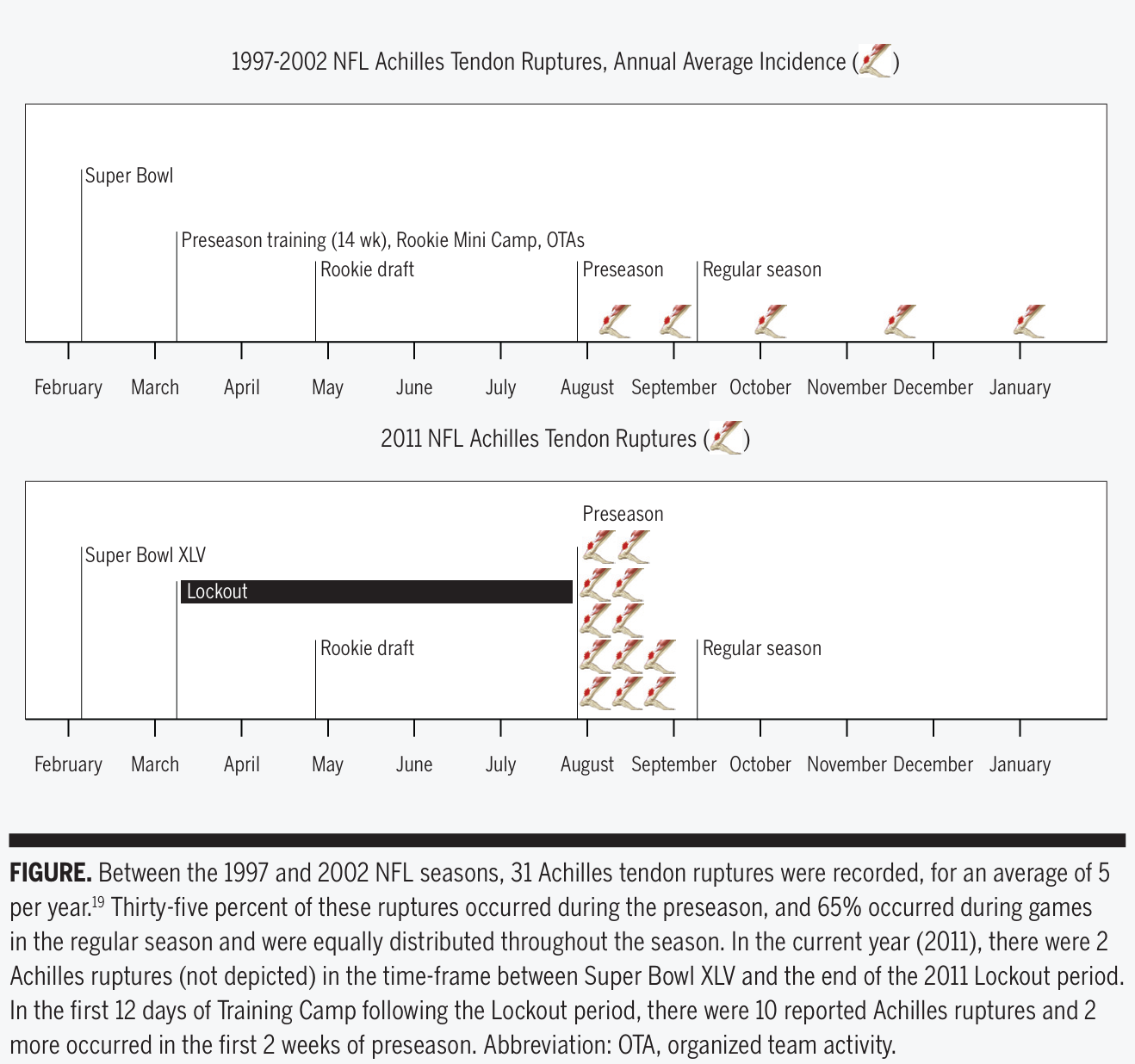In 2011, an NFL Lockout led to an unprecedented offseason, during which players had no access to team medical staff, strength coaches, or structured preseason training.
The article examined the impact of this disruption on injury risk, specifically Achilles tendon ruptures, during training camp and the preseason.
The findings raise important questions about the role of structured preparation in preventing catastrophic injuries, and highlights how important an off-season training plan is.
The review asks, Did the NFL Lockout Expose the Achilles Heel of Competitive Sports?
What Did the Researchers Do?
The authors reviewed injury data surrounding the 2011 NFL Lockout period (March 11 to July 25) and compared the incidence of Achilles tendon ruptures in the 2011 preseason to historical data to determine the effects of the lockout.
They analyzed injury timing (training camp vs. preseason vs. regular season), player age and experience, and contextualized with team access and preseason structure.
What Happened Following the 2011 Lockout?
In just the first 12 days of 2011 training camp, 10 Achilles tendon ruptures were reported.
Two more occurred within the next 17 days, totaling 12 ruptures in under a month, more than a full-season average.
Normally, 1–3 ruptures occur during the entire preseason. This was a 4x increase.
Of those 12 injuries:
- 5 occurred in rookies, challenging prior data that labeled Achilles tears as a “veteran injury.”
- The average player age dropped from 29 to 23.9 years.
- The average experience of injured players was just 1.4 years, vs. a historical 6 years.

What Does This Mean?
The lockout-induced lack of preparatory conditioning created a perfect storm:
- No progressive ramp-up
- No medical oversight
- No structured team training
Players were thrown into intense practice with only 17 days of preparation, creating a significant risk of injury.
Younger, less experienced players were especially affected, likely due to:
- Lower financial and logistical resources
- Less understanding of the NFL demands
The takeaway is clear: shortened prep periods increase the risk of Achilles ruptures, and likely other injuries.
Limitations
This was an observational editorial, not a controlled study, so causation can’t be claimed, though the correlation is strong.
No direct analysis of other injury types (e.g., ACL, hamstring) was included, although that data would be interesting and valuable.
Coach’s Takeaway
- Abrupt return to high-intensity sport is associated with an elevated injury risk, even in elite athletes.
- Progressive, structured conditioning is essential, especially for younger and early-career athletes.
- Preseason matters both for performance and injury reduction.
I hope this helps,
Ramsey
Reference
Myer, G. D., Faigenbaum, A. D., Cherny, C. E., Heidt, R. S., & Hewett, T. E. (2011). Did the NFL Lockout Expose the Achilles Heel of Competitive Sports? Journal of Orthopaedic & Sports Physical Therapy, 41(10), 702–705.




